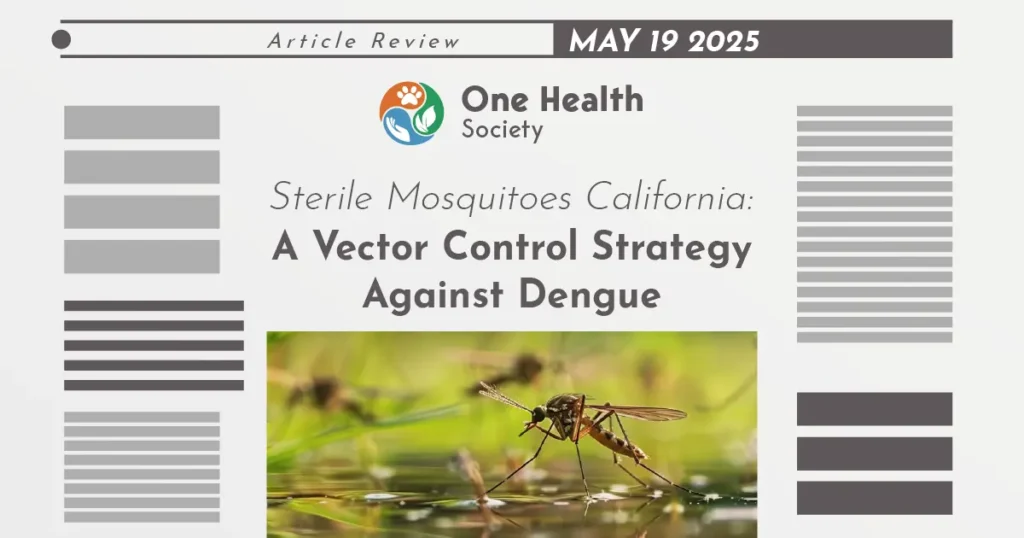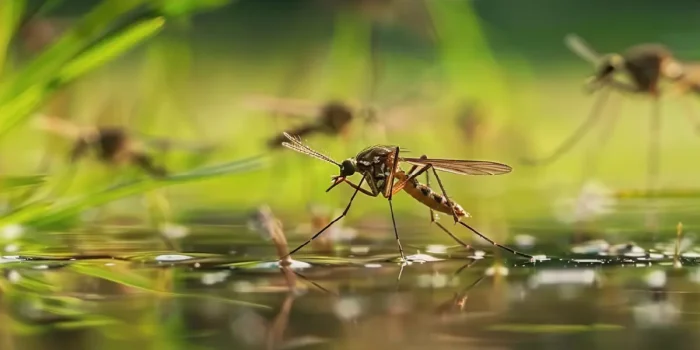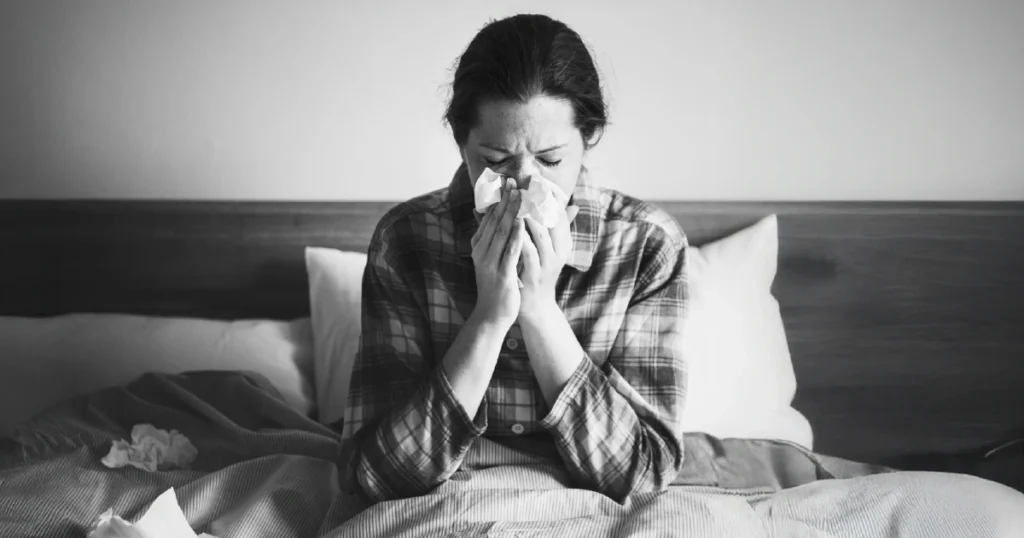Introduction
As Aedes aegypti mosquitoes expand their range across Southern California, public health agencies are turning to scientific innovation to reduce the threat of mosquito-borne illnesses. The release of sterile mosquitoes in California marks a shift toward environmentally sustainable vector control, with the potential to significantly reduce dengue transmission in urban areas through biological suppression of the mosquito population.

Could releasing sterile mosquitoes be the breakthrough California needs to stop dengue?
You're viewing a members-only article.
To keep reading, please log in or join the One Health Society.
Stay connected to exclusive insights, expert commentary, and opportunities to collaborate across the fields of human, animal, and environmental health.
Already a member? Log In
New here? Join the One Health Society - become One
Scientific Background: Sterile Insect Technique
The Sterile Insect Technique (SIT) is a biological vector control strategy developed in the mid-20th century. It involves:
- Mass-rearing male insects in controlled environments
- Sterilizing them through radiation or microbial methods
- Releasing them into the wild to mate with wild females
- Producing no viable offspring, thereby suppressing the population
In California’s program, sterilization is achieved using Wolbachia pipientis, a naturally occurring bacterium that induces cytoplasmic incompatibility. When infected males mate with uninfected females, their eggs fail to hatch. This method is non-genetically modified, self-limiting, and poses no harm to humans, animals, or the environment. Importantly, the released mosquitoes do not persist beyond the treated generation.
Previous SIT deployments in Brazil, Singapore, and Florida have shown significant success in reducing Aedes aegypti populations and associated disease transmission.
Rationale for Implementation in California
Over the past decade, Aedes aegypti has become entrenched in parts of California, particularly in Los Angeles and San Bernardino counties. These areas provide ideal conditions for mosquito proliferation: consistently warm temperatures, densely populated neighborhoods, and widespread availability of artificial containers that collect standing water.
Traditional control methods, such as insecticide spraying and source reduction, face increasing limitations. Insecticide resistance, environmental concerns, and incomplete coverage have prompted public health agencies to explore more sustainable approaches. The sterile mosquitoes California initiative offers a chemical-free, targeted solution that aligns with CDC and WHO recommendations for integrated vector management.
Program Design and Execution
The pilot program launched in Spring 2025, focusing on neighborhoods with high Aedes aegypti activity and recent dengue cases. Key operational elements include:
- Target species: Aedes aegypti
- Sterilization technique: Wolbachia bacterial infection
- Deployment frequency: Weekly releases in designated areas
- Monitoring tools: Ovitraps and adult mosquito surveillance to track population shifts
Initial data from treated zones indicate a marked decline in both adult mosquito counts and egg viability. Continued monitoring and adjustments to release frequency will help assess long-term effectiveness.
Benefits and Limitations
The biological method offers clear advantages:
- Environmentally safe: No chemical exposure or runoff
- Highly specific: Affects only Aedes aegypti, protecting beneficial species
- Non-persistent: Sterile males die off naturally and cannot establish ongoing populations
However, limitations include the operational demands of continuous mosquito production and distribution, the localized nature of its effectiveness, and the importance of maintaining strong public understanding and support. Misconceptions about mosquito releases can lead to hesitation or misinformation in affected communities.
Community Engagement and Public Awareness
Community outreach has been a foundational element of the program’s rollout. Public health officials have:
- Distributed multilingual educational materials
- Conducted door-to-door campaigns and community meetings
- Provided clear messaging that sterile males do not bite or transmit disease
These efforts aim to build transparency, promote trust, and ensure that residents understand both the safety and the science behind the intervention. Informed communities are more likely to cooperate with surveillance activities and support long-term success.
Conclusion: A Sustainable Model for Vector Control
The deployment of sterile mosquitoes in California presents a forward-looking, scientifically sound approach to vector-borne disease prevention. By disrupting the reproductive cycle of Aedes aegypti without chemicals or genetic modification, SIT offers a highly targeted solution that balances ecological protection with public health impact.
Early indicators suggest that California’s strategy may serve as a model for similar urban areas seeking sustainable mosquito control. Continued surveillance, community collaboration, and operational investment will be critical for scaling this intervention effectively.













